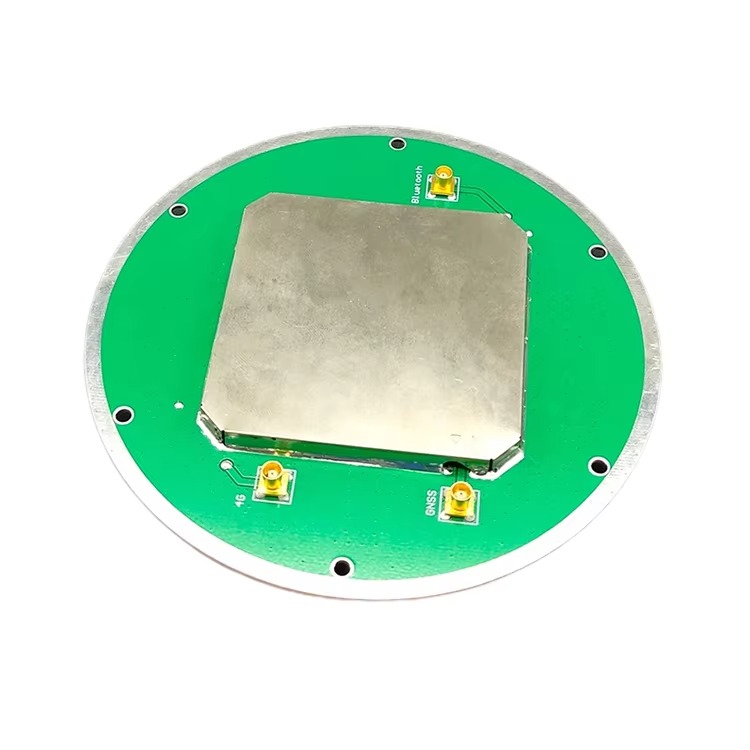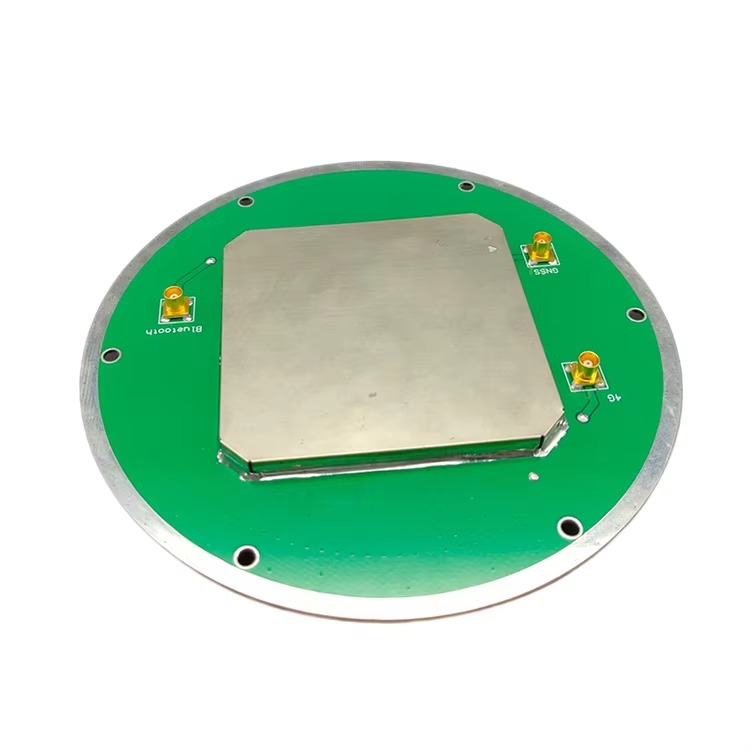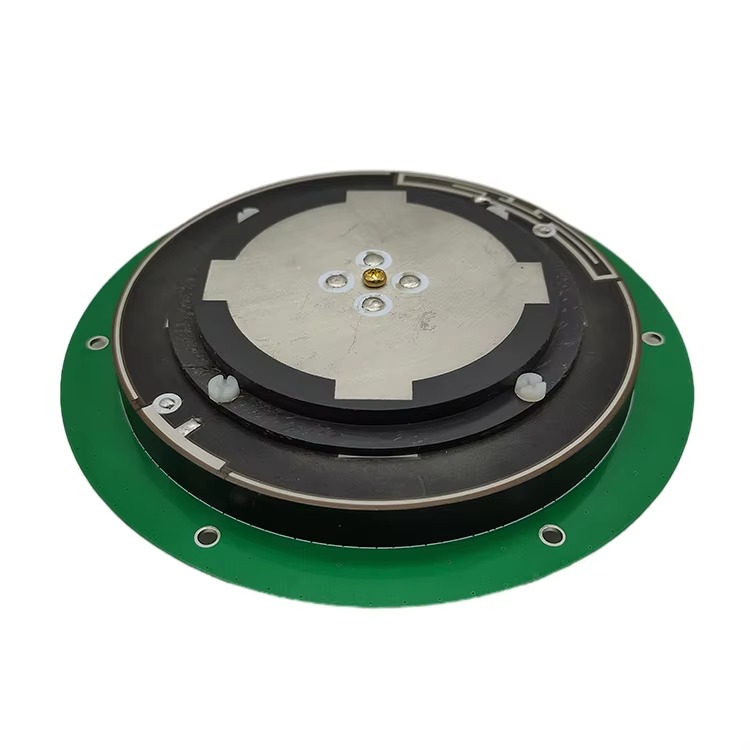Overview
The "Integrated" aspect signifies a holistic design philosophy where the antenna is not an off-the-shelf component but a unified system that often combines the radiating element, a robust environmental radome, advanced signal conditioning electronics, and meticulous mitigation features against errors into a single, optimized package. The primary mission of a CORS antenna is to act as an unchanging, fiducial point on the Earth's surface. Any imperfection in its performance directly translates into errors propagated to every user and measurement that relies on its data.
The core requirements for such an antenna are exceptionally stringent. First and foremost is phase center stability. The phase center is the virtual point from which the radio wave appears to emanate. For high-precision applications using carrier phase measurements, any movement of this point—whether due to changes in the angle of the incoming satellite signal (azimuth and elevation), the signal's frequency, or environmental conditions like temperature—introduces measurable error. A high-quality CORS antenna is meticulously designed and calibrated to have a phase center that is as stable and predictable as possible.
Secondly, it must exhibit exceptional multipath mitigation. Multipath occurs when a satellite signal arrives at the antenna not directly, but after reflecting off the ground, buildings, or other nearby objects. These reflected signals travel a longer path and corrupt the precise timing measurements. CORS antennas combat this through specialized ground planes (often featuring "choke rings") and carefully engineered radome shapes that reject low-elevation signals where multipath is most prevalent.
Finally, resilience and continuity are paramount. These antennas are deployed in harsh, unattended environments—on mountain peaks, rooftops, in deserts, and Arctic regions. They must be built to withstand extreme temperatures, high winds, UV radiation, ice, and moisture ingress. The integration of heating elements is common to prevent snow and ice accumulation, which would otherwise block signals and halt operations. The design is a masterclass in balancing electromagnetic performance with mechanical and environmental ruggedness.
In essence, an integrated CORS base station antenna is the silent guardian of precision. It is the critical first link in a chain of measurement, transforming analog electromagnetic waves from distant satellites into a pristine digital data stream that enables a vast ecosystem of scientific, commercial, and industrial applications to achieve unparalleled accuracy.
Design and Construction
The design and construction of an integrated CORS antenna is a multidisciplinary endeavor, demanding expertise in electromagnetics, materials science, mechanical engineering, and thermodynamics. Every aspect is optimized for performance and stability, with cost being a secondary concern.
1. The Radiating Element: Beyond the Simple Patch
While patch antennas are common in consumer devices, high-end CORS antennas typically use a more sophisticated design. A stacked or multi-ring patch design is often employed to achieve wide bandwidth coverage across all major GNSS bands (GPS L1/L2/L5, GLONASS G1/G2/G3, Galileo E1/E5a/E5b/E6, and BeiDou B1/B2/B3). These elements are precision-machined from brass or bronze and plated with silver or gold to ensure low surface resistivity and excellent corrosion resistance. The geometry is finely tuned to produce pure Right-Hand Circular Polarization (RHCP) and a wide beamwidth to "see" satellites from horizon to horizon.
2. The Ground Plane and Choke Ring Assembly
This is the most distinctive visual feature of a geodetic-grade antenna. The ground plane is a large, solid metal disc. Beneath it, a series of concentric, precision-machined metal rings form the "choke." This structure acts as a high-impedance surface, creating a boundary condition that suppresses surface waves. Electrically, it functions as a filter that severely attenuates signals arriving at low angles (below 5-10 degrees), which are far more likely to be multipath reflections than direct line-of-sight signals. The depth and spacing of the rings are calculated to be a quarter-wavelength at the target frequencies, making them resonant and highly effective. This integrated choke ring is far superior to a simple flat ground plane.
3. The Radome: More Than Just a Cover
The radome is a critical structural and electromagnetic component. It is not a simple plastic dome but is engineered to:
Be Electrically Transparent: Its material and thickness are chosen to have minimal effect on the signal path, minimizing insertion loss and phase delay. Low-density polyethylene (LDPE) or polycarbonate with specific dielectric properties is used.
Provide Environmental Protection: It is typically IP67-rated or higher, sealed with robust O-rings to prevent any moisture ingress. It must be UV-stabilized to prevent yellowing and embrittlement from long-term sun exposure.
Withstand Physical Loads: Its shape is designed to shed wind, snow, and ice load efficiently. The structure is rigid to prevent flexing, which could subtly alter the antenna's phase characteristics.
4. Integrated Heating Element
To ensure continuous operation in all weather conditions, a thermostatically controlled heating element is integrated between the ground plane and the radome. This prevents the formation of ice and snow on the radome, which would otherwise act as a signal-blocking shield. The thermal system must be designed to heat evenly to avoid creating thermal gradients that could warp components and destabilize the phase center.
5. Internal Components and Filtering
The antenna assembly often integrates a preamplifier (preamp) within the sealed housing. This provides gain to overcome cable loss and improves the signal-to-noise ratio before any degradation occurs. Crucially, this preamp must be extremely low-noise and linear to avoid distorting the weak GNSS signals. Advanced models also incorporate integrated bandpass filters to reject out-of-band interference from cellular, radio, and other RF transmitters, which is increasingly important in urban CORS locations.
6. Calibration and Mounting
The entire assembly is mounted on a sturdy, corrosion-resistant base made of stainless steel or anodized aluminum, featuring a standard geodetic mount (typically a 5/8"-11 thread). Every production model of a high-precision CORS antenna undergoes rigorous robotic calibration to map its phase center variations relative to a known reference point (the Antenna Reference Point or ARP) across all frequencies and elevation angles. This results in a published calibration values (like an IGS antex file) that users can apply in their processing software to correct for these inherent biases, elevating the system's absolute accuracy from the centimeter to the millimeter level.
Working Principles
The working principles of a CORS antenna extend far beyond simply receiving RF signals. Its operation is defined by its relentless pursuit of signal purity and measurement fidelity.
1. Signal Reception and Phase Preservation:
The fundamental task is to convert the incoming RHCP electromagnetic wave into an electrical current in the antenna's feed element. However, for carrier-phase positioning, the absolute preservation of the signal's phase is paramount. The antenna must not introduce any unpredictable phase shifts. The carefully designed patch element and feed network are engineered for symmetrical and consistent excitation, ensuring that the phase front of the received wave is sampled uniformly. This is why materials with stable electrical properties over temperature are critical—a change in temperature must not cause the substrate to expand or alter its dielectric constant in a way that shifts the phase center.
2. Multipath Mitigation in Action:
The choke ring ground plane is the primary weapon against multipath. Its operation is based on the principle of wave impedance. For a signal arriving at a low elevation angle (a likely multipath reflection), it strikes the choke rings. The rings, being a quarter-wavelength deep, present a very high impedance (almost an open circuit) at their resonant frequency to currents flowing along the ground plane. This high impedance prevents the surface currents that would normally be induced by a reflected wave from forming. Without these currents, the antenna cannot efficiently couple energy from the reflected wave. In effect, the antenna becomes "deaf" to signals coming from near the horizon, which are filtered out, while maintaining high sensitivity to direct signals from above.
3. The Pre-Amplification Stage:
The integrated low-noise amplifier (LNA) serves a critical purpose. GNSS signals are incredibly weak by the time they reach Earth's surface, often described as being "below the noise floor." The LNA provides gain (typically 25-40 dB) to boost the signal amplitude. More importantly, because it does this before the signal travels down a long cable (which introduces loss and adds its own noise), it preserves the signal-to-noise ratio (SNR). A high SNR is essential for the receiver to maintain lock on satellites, especially under foliage or in slightly obstructed environments, and for achieving rapid integer ambiguity resolution in RTK processing.
4. Phase Center Stability: A System View:
The antenna's working principle is ultimately judged by the stability of its phase center. This is not a single point but a locus of points that can vary with:
Elevation Angle: A satellite directly overhead excites the antenna differently than one near the horizon.
Azimuth Angle: The antenna's response should be perfectly symmetrical, but minute manufacturing imperfections can cause slight variations.
Frequency: The phase center for L1 is not in the exact same location as for L2 or L5.
The antenna's design—its symmetry, the use of a large ground plane, and the choke rings—works to minimize these variations. The calibrated phase center pattern is, in essence, a map of these residual errors. When a user applies this calibration, their processing software corrects the observed phase measurements based on the known satellite's azimuth and elevation, effectively normalizing the measurements to a single, stable reference point.
In operation, the CORS antenna is a highly discriminatory filter. It selectively receives direct signals from satellites, amplifies them without adding distortion, and delivers a clean, stable phase-based measurement to the receiver, all while actively rejecting the noise and multipath that would corrupt those measurements.
Advantages and Challenges
-
The deployment of a dedicated, integrated CORS antenna offers significant advantages but also presents unique challenges that must be managed.
Advantages:
Unmatched Measurement Accuracy and Precision: This is the primary advantage. The integrated design, featuring choke rings and a calibrated phase center, provides the highest possible data quality. This translates directly into faster integer ambiguity resolution for RTK users, more reliable centimeter-level accuracy, and the ability to support scientific-grade applications like crustal deformation monitoring.
Superior Multipath Rejection: The choke ring design offers unparalleled suppression of reflected signals, a feature that simple survey antennas or patch antennas lack. This is especially critical in challenging environments where a CORS might be located, such as on a building roof surrounded by other structures.
Exceptional Reliability and Continuity of Service: Built for permanent, 24/7 operation, these antennas are incredibly robust. The sealed radome, integrated heating, and high-quality materials ensure they continue to operate through storms, ice, and extreme heat, maximizing the uptime of the entire CORS network.
Interference Rejection: The integration of filtering within the antenna housing provides a first line of defense against RF interference from other services, protecting the sensitive GNSS receiver from being blinded or desensitized.
Long-Term Stability: The mechanical and thermal stability of the design means that its characteristics—especially its phase center offset—remain constant for years. This ensures the long-term consistency of the data time series, which is vital for scientific applications like monitoring sea-level rise or tectonic plate movement.
Challenges:
High Cost: This is the most significant barrier. The precision machining, specialized materials, rigorous calibration, and rugged construction make integrated CORS antennas among the most expensive GNSS antennas on the market, often costing thousands of dollars per unit.
Size and Weight: The choke ring assembly is necessarily large (diameters of 30-40 cm are common) and heavy. This makes logistics, installation, and mounting more complex and expensive. It requires a substantial and stable monument (e.g., a deep concrete pillar or a massive steel tower) to ensure it does not move.
Power Requirements: The integrated heater is a necessity in many climates but consumes significant power (can be 20-50 Watts when active). This must be factored into the site design, often requiring a larger solar power system or AC power connection, adding to the overall cost and complexity.
Calibration Dependency: The antenna's ultimate accuracy is only realized if users apply the correct manufacturer-provided calibration data (antex file) in their processing software. Failure to do so introduces systematic biases into the results. This requires awareness and proper data management from the end-users.
Site Selection Limitations: While the antenna itself is robust, the need for a clear sky view and a truly stable monument limits where a CORS can be installed. Finding a secure, accessible, and scientifically suitable location that also has power and internet connectivity can be a major logistical challenge.
Applications and Future Trends
-
Integrated CORS antennas are enabling technologies for a wide range of precision applications and are evolving to meet new demands.
Applications:
National Geodetic Networks: The foundational application. Organizations like the National Geodetic Survey (NGS) operate networks of hundreds of CORS stations to define and maintain the National Spatial Reference System (NSRS), providing the fundamental framework for all mapping and surveying in a country.
Scientific Research:
Geodynamics: Monitoring tectonic plate motion, fault slip, and post-glacial rebound with millimeter-level precision.
Meteorology: Estimating atmospheric water vapor content by measuring the delay in GNSS signals through the troposphere, improving weather forecasting.
Ionosphere Studies: Mapping disturbances in the ionosphere to study space weather.
Precision Agriculture: CORS networks provide RTK corrections to farmers, enabling automated tractor guidance for planting, fertilizing, and harvesting with centimeter accuracy, drastically reducing overlap and input costs.
Surveying and Construction: The standard tool for high-precision land surveying, engineering site preparation, machine control on bulldozers and graders, and as-built verification.
Autonomous Vehicle Testing and Deployment: While autonomous cars use multiple sensors, high-precision GNSS corrections from a CORS network provide the essential absolute positioning layer that validates and corrects data from cameras, LiDAR, and inertial systems.
Future Trends:
Multi-Constellation, Multi-Frequency Support: Next-generation antennas are being designed to natively support all signals from GPS (L1C, L2C, L5), Galileo (E6), and BeiDou (B2a), offering more signals for faster, more robust positioning.
Enhanced Interference Mitigation: The threat of jamming and spoofing is growing. Future antennas will integrate more advanced adaptive filtering and null-steering capabilities to identify and reject malicious or accidental interference dynamically.
Miniaturization and Material Science: Research into metamaterials and artificial magnetic conductors aims to create ground plane structures that offer choke-ring performance in a much smaller, lighter form factor, reducing the size, weight, and cost of installation.
Integrated Inertial and Other Sensors: We may see the integration of inertial measurement units (IMUs) or meteorological sensors into the antenna housing, providing a more complete "station" data package from a single unit.
Cloud-Based Calibration and Monitoring: Antennas could feature self-diagnostic and reporting capabilities, sending health and performance data to a network operations center to enable predictive maintenance and ensure the ongoing integrity of the network data.
Conclusion
The integrated CORS base station antenna is a masterpiece of precision engineering, representing the highest echelon of GNSS technology. It is far more than a passive receptor; it is an active, intelligent filter dedicated to the singular goal of measurement purity. Its design embodies a deep understanding of the error sources that plague GNSS—multipath, phase instability, interference, and environmental havoc—and systematically neutralizes them through sophisticated electromagnetic and mechanical design.
While its cost and size present challenges, they are justified by its unparalleled performance and reliability. It is the indispensable foundation upon which entire national spatial reference systems are built and the reason why industries from agriculture to construction can achieve centimeter-level accuracy reliably and at scale. As the demand for precision continues to grow, driven by autonomy and scientific discovery, the integrated CORS antenna will continue to evolve. It will become more capable, more resilient, and more intelligent, solidifying its role as the silent, stable, and utterly critical fiducial point on our ever-changing planet.




































































 Language
Language
 En
En Cn
Cn Korean
Korean

 Home >
Home > 







 18665803017 (Macro)
18665803017 (Macro)













